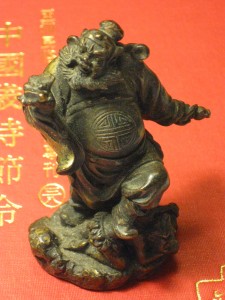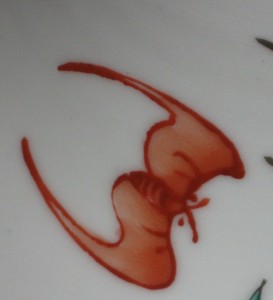
Images of Zhōng Kuí (鍾魁), a mythological figure in Chinese folklore, are often seen in traditional homes. He was a successful scholar—which is why he wears a scholar’s hat. His job is to exorcise demons, banish evil, and encourage blessings to come into the home. These three tasks are represented in his image through the sword he carries on his back, the demon often seen cringing under his foot, and the bat (which represents blessings) found on or near his fan. Sometimes he is shown without his foot on a cowering demon, nevertheless, simply having his picture or statue scares away evil and demons, keeping the family safe. He is a dynamic figure, full of energy and ferocious protectiveness.Today, when someone is described as Zhōng Kuí (鍾魁), the speaker is saying she has the courage to fight against evil. (from: http://www.mdbg.net/chindict/chindict.php?page=worddict&wdrst=0&wdqb=zhong)Note: The characters used for Zhōng Kuí (鍾魁) are from Eberhard. Although the pronunciation is the same, Bartholomew uses a different Chinese character for Kuí (鍾馗).
